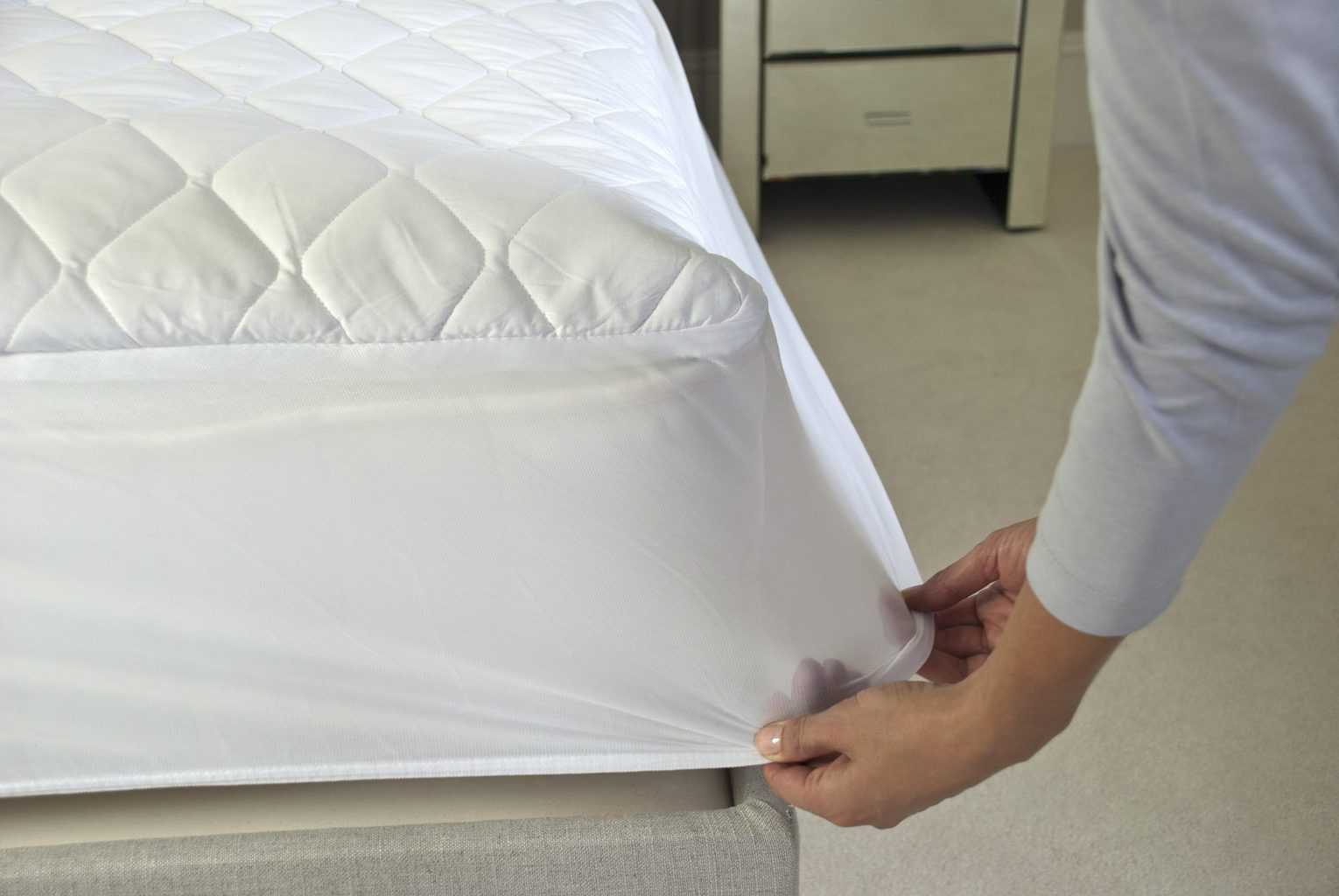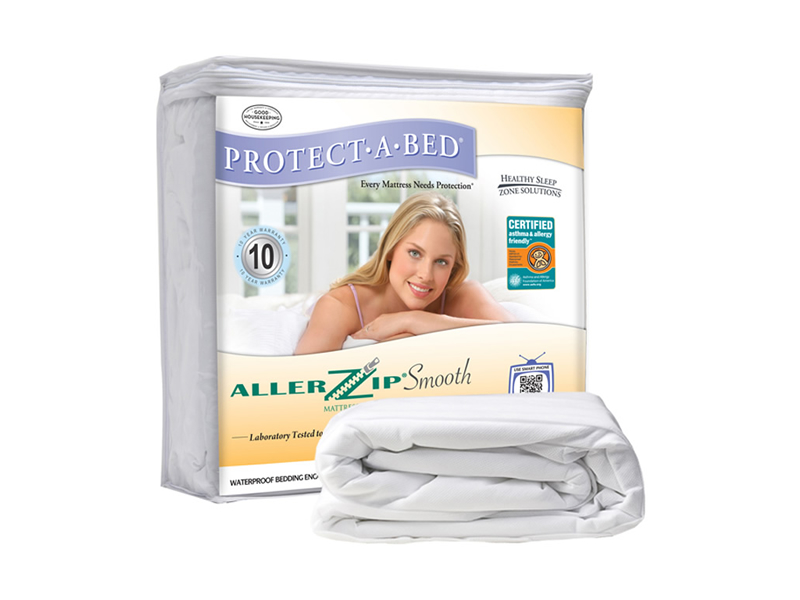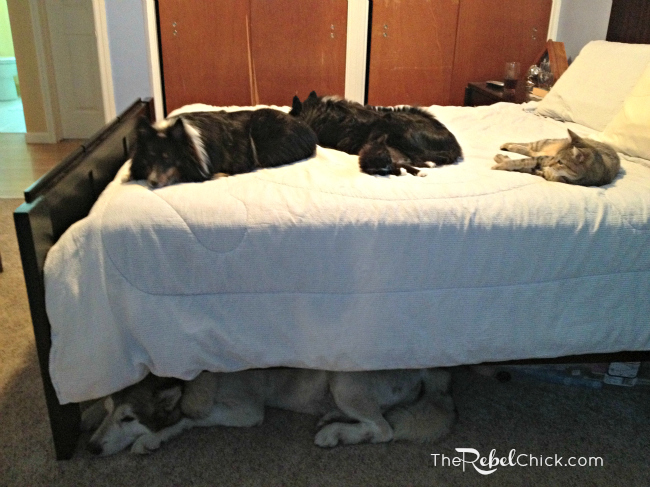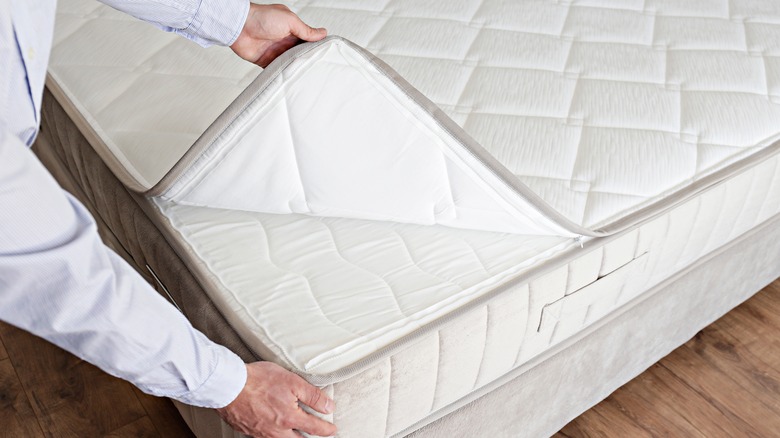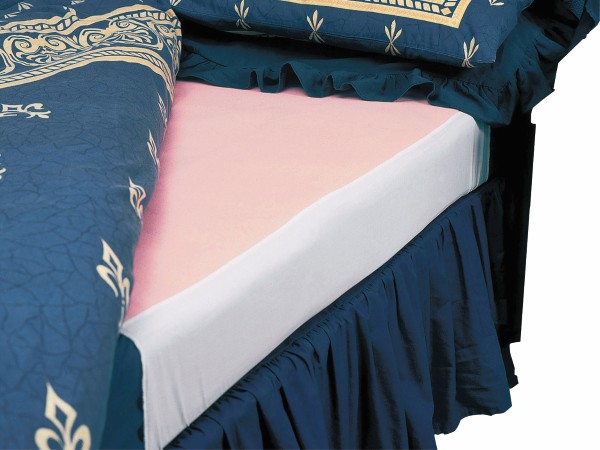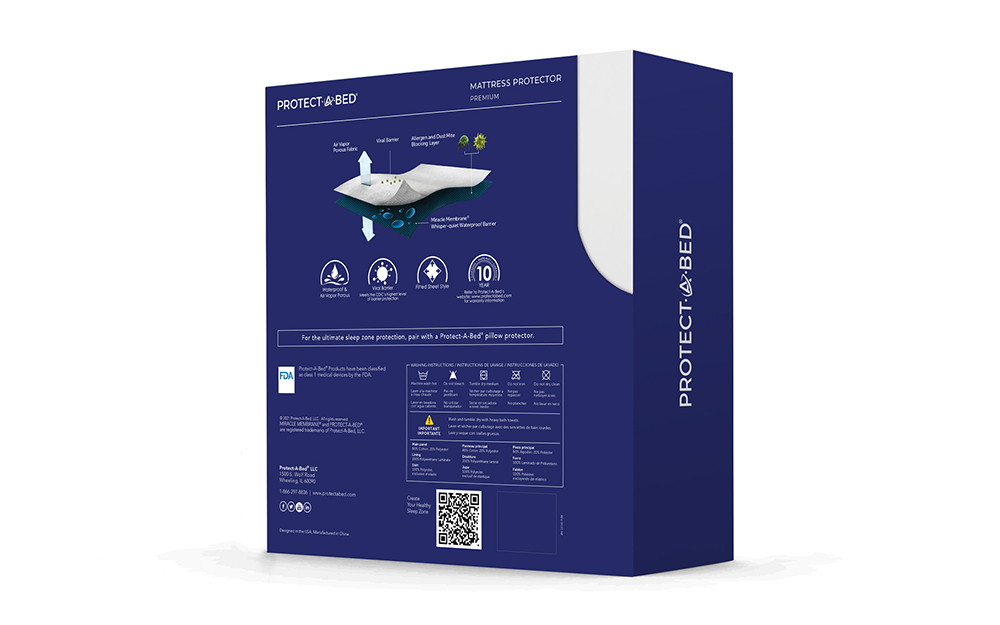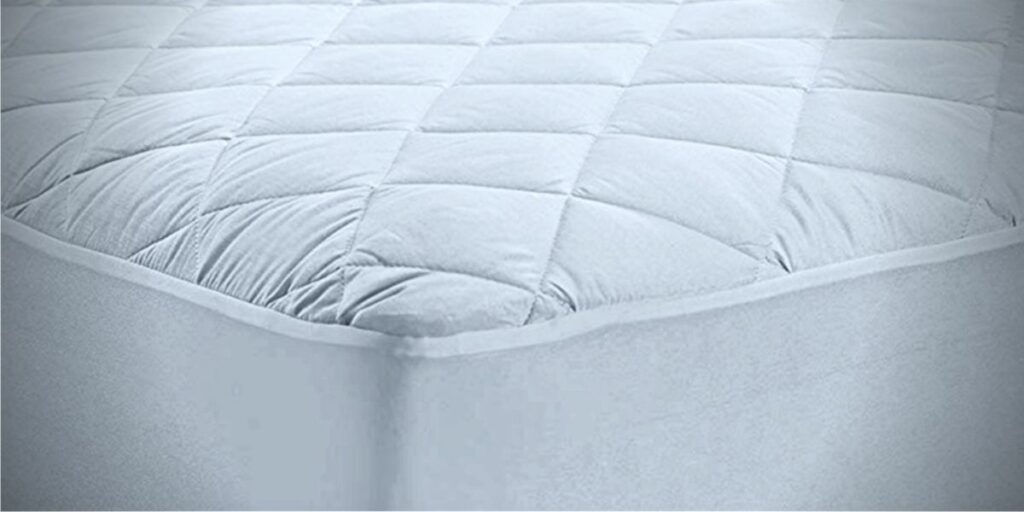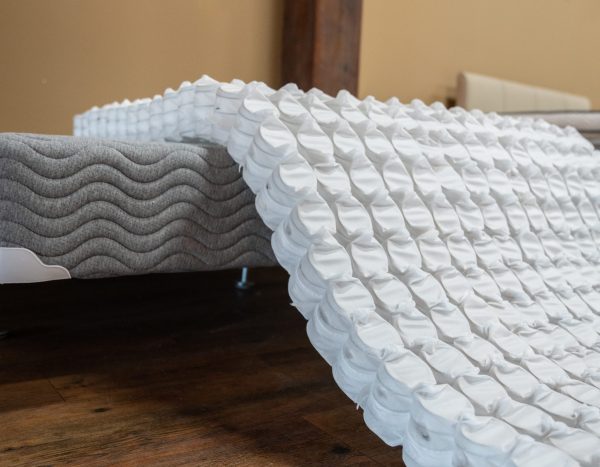When it comes to protecting your mattress, a mattress protector is a must-have. Not only does it keep your mattress clean and hygienic, but it also prolongs its lifespan. However, just like your sheets and pillowcases, your mattress protector needs to be washed regularly to maintain its effectiveness. Here are 10 easy tips for washing your Protect-A-Bed mattress protector.Protect Your Mattress with These Easy Washing Tips
Before you start washing your mattress protector, always check the care label for specific instructions. Some protectors may have special washing requirements, such as a specific water temperature or a gentle cycle. Following these instructions will ensure that your protector is cleaned properly without any damage.1. Check the Care Label
Accidents happen, and your mattress protector may end up with stains. It's important to treat these stains as soon as possible to prevent them from setting. Use a mild detergent and cold water to gently rub the stain until it disappears. Avoid using hot water, as it can cause the stain to set.2. Remove Stains Immediately
When it's time to wash your protector, always use cold water. This will help prevent shrinkage and maintain the waterproof barrier. Hot water can also damage the waterproof layer, making it less effective in protecting your mattress from spills and stains.3. Wash in Cold Water
To keep your mattress protector in top condition, it's best to use a gentle cycle when washing it. This will prevent any unnecessary wear and tear, ensuring that your protector lasts for a long time. If your protector is heavily soiled, you can add an extra rinse cycle to ensure that all the detergent is removed.4. Use a Gentle Cycle
When it comes to washing your mattress protector, less is more. Avoid using harsh detergents or bleach as they can damage the fabric and reduce the effectiveness of the waterproof barrier. Instead, opt for a mild detergent that is gentle on fabrics.5. Use a Mild Detergent
Fabric softeners may make your sheets feel soft and fluffy, but they can damage your mattress protector. The chemicals in fabric softeners can break down the waterproof layer, making it less effective. Instead, add a cup of white vinegar during the rinse cycle to help soften your protector without damaging it.6. Avoid Fabric Softeners
After washing, it's best to dry your mattress protector on low heat. High heat can cause shrinkage and damage the waterproof layer. If possible, hang your protector to dry in the sun. The sun's UV rays can help kill any bacteria and keep your protector fresh and clean.7. Dry on Low Heat
Ironing your mattress protector is not necessary and can actually damage the fabric. The high heat can cause the waterproof layer to melt, reducing its effectiveness. If your protector comes out of the dryer wrinkled, simply smooth it out with your hands or a low-heat iron if necessary.8. Don't Iron
Dry cleaning is not recommended for mattress protectors. The chemicals used in dry cleaning can damage the waterproof layer and affect its ability to protect your mattress. Stick to washing your protector at home to ensure its longevity.9. Avoid Dry Cleaning
How often you wash your mattress protector will depend on your personal preference and lifestyle. However, it's recommended to wash it every 1-2 months to keep it clean and free from bacteria and allergens. If you have allergies or pets, you may want to wash it more frequently. By following these simple tips, you can keep your Protect-A-Bed mattress protector clean and in top condition. Remember to always check the care label for specific instructions and avoid using harsh chemicals or high heat. With proper care, your mattress protector will continue to protect your mattress for years to come.10. Wash Every 1-2 Months
Why Protecting Your Mattress is Essential for a Healthy Home

The Importance of a Mattress Protector
 When it comes to designing and maintaining a healthy home, many people often overlook the importance of protecting their mattress. However, a good mattress protector is an essential component of a hygienic and comfortable living space. Not only does it prolong the life of your mattress, but it also plays a crucial role in safeguarding your health and well-being.
Mattress protectors
act as a barrier between you and your mattress, preventing any dirt, dust, and other allergens from seeping into its surface. Without a protector, your mattress can become a breeding ground for bacteria, mold, and dust mites, which can lead to various health issues such as allergies, respiratory problems, and skin irritation. A
washing
mattress protector
is especially important for those with asthma or other respiratory conditions, as it helps to reduce exposure to potential triggers.
When it comes to designing and maintaining a healthy home, many people often overlook the importance of protecting their mattress. However, a good mattress protector is an essential component of a hygienic and comfortable living space. Not only does it prolong the life of your mattress, but it also plays a crucial role in safeguarding your health and well-being.
Mattress protectors
act as a barrier between you and your mattress, preventing any dirt, dust, and other allergens from seeping into its surface. Without a protector, your mattress can become a breeding ground for bacteria, mold, and dust mites, which can lead to various health issues such as allergies, respiratory problems, and skin irritation. A
washing
mattress protector
is especially important for those with asthma or other respiratory conditions, as it helps to reduce exposure to potential triggers.
The Benefits of Using a Protect-A-Bed Mattress Protector
 When it comes to choosing the right
mattress protector
, Protect-A-Bed is a name that comes highly recommended. Their protectors are not only waterproof and hypoallergenic, but they are also made with
high-quality materials
that are gentle on the skin and
eco-friendly
. This means you can sleep soundly knowing that your mattress is protected from spills, stains, and other potential hazards, while also being kind to the environment.
But what sets a Protect-A-Bed
mattress protector
apart from others is its innovative technology. Their products are equipped with
patented features
such as the
Miracle Membrane
, which creates a waterproof barrier while still allowing air to pass through, keeping your mattress cool and comfortable. They also offer a
10-year warranty
, giving you peace of mind and confidence in your purchase.
When it comes to choosing the right
mattress protector
, Protect-A-Bed is a name that comes highly recommended. Their protectors are not only waterproof and hypoallergenic, but they are also made with
high-quality materials
that are gentle on the skin and
eco-friendly
. This means you can sleep soundly knowing that your mattress is protected from spills, stains, and other potential hazards, while also being kind to the environment.
But what sets a Protect-A-Bed
mattress protector
apart from others is its innovative technology. Their products are equipped with
patented features
such as the
Miracle Membrane
, which creates a waterproof barrier while still allowing air to pass through, keeping your mattress cool and comfortable. They also offer a
10-year warranty
, giving you peace of mind and confidence in your purchase.
How to Properly Wash Your Mattress Protector
 While Protect-A-Bed mattress protectors are designed to be durable and long-lasting, it's important to regularly
wash
them to maintain their effectiveness. The
Protect-A-Bed Mattress Protector Washing
instructions are simple and straightforward. First, remove the protector from your mattress and
spot clean
any stains with a mild detergent. Then, wash it in cold or warm water on a gentle cycle and
tumble dry
on low heat. It's important to avoid using bleach or harsh chemicals as they can damage the protector's waterproof layer.
In conclusion, investing in a high-quality mattress protector, such as Protect-A-Bed, is crucial for maintaining a healthy and comfortable home. Not only does it protect your mattress from spills and stains, but it also promotes a hygienic sleeping environment. So why wait? Protect your mattress and your health with a Protect-A-Bed mattress protector today.
While Protect-A-Bed mattress protectors are designed to be durable and long-lasting, it's important to regularly
wash
them to maintain their effectiveness. The
Protect-A-Bed Mattress Protector Washing
instructions are simple and straightforward. First, remove the protector from your mattress and
spot clean
any stains with a mild detergent. Then, wash it in cold or warm water on a gentle cycle and
tumble dry
on low heat. It's important to avoid using bleach or harsh chemicals as they can damage the protector's waterproof layer.
In conclusion, investing in a high-quality mattress protector, such as Protect-A-Bed, is crucial for maintaining a healthy and comfortable home. Not only does it protect your mattress from spills and stains, but it also promotes a hygienic sleeping environment. So why wait? Protect your mattress and your health with a Protect-A-Bed mattress protector today.




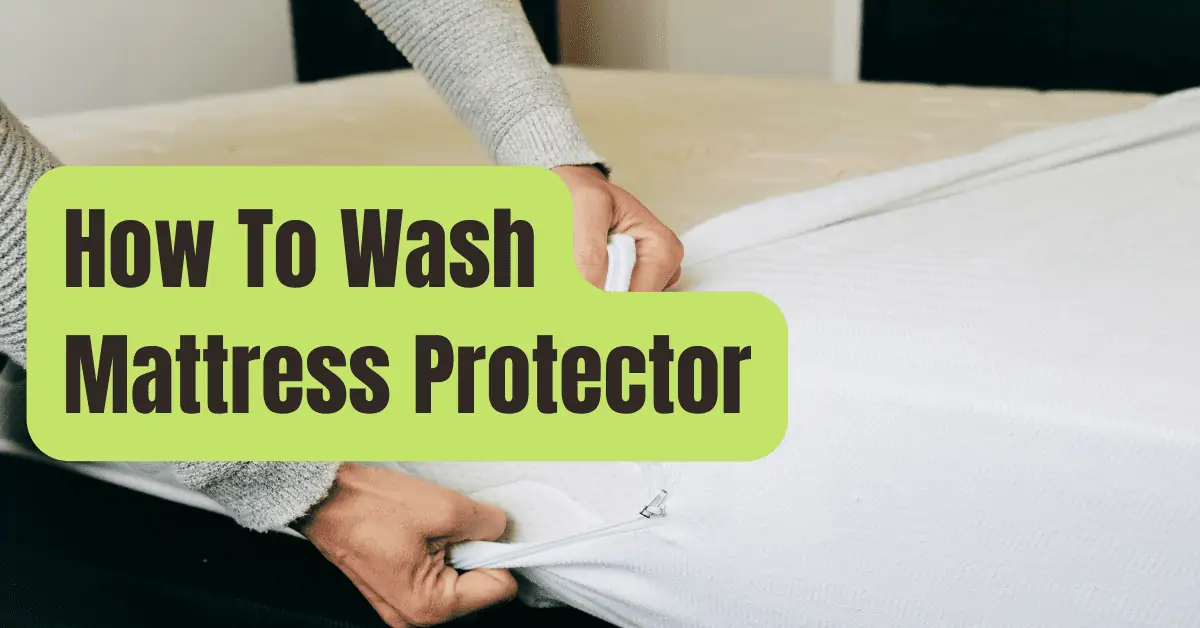



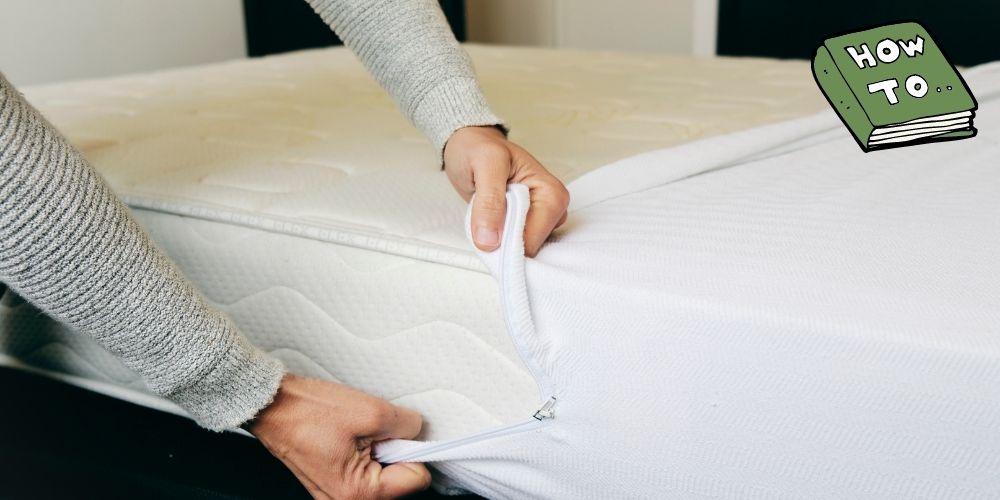


:max_bytes(150000):strip_icc()/how-to-wash-mattress-protector-5220415-hero-ef3d29e5dac34ab8a6482dc4e31a1252.jpg)
